| |
|
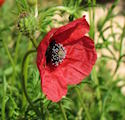 | |
| MaltaWildPlants.com by Stephen Mifsud |

|
| |
|
|
 |  |  |  |
| External Links: |
|
Prospero autumnale (Autumn Squill) |
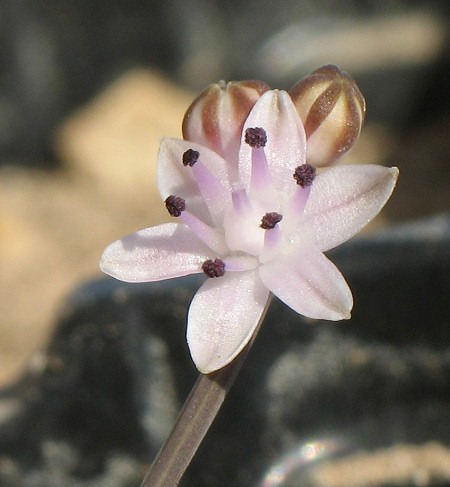
Prospero autumnale (ASPARAGACEAE.)
Images for this profile are taken from the Maltese Islands after year 2000. |
|
| Nomenclature |
Species name : | Prospero autumnale (L.) Speta. | Authority : | Carl von Linne, Sweden, (1707 - 1778) ;
Franz Speta, Austria, (1941 - ) | Synonyms :
(basionym or principal syn.) |
|
Plant Family : | Asparagaceae Juss. (= Liliaceae )
(Asparagus Family) | English name(s) : | Autumn Squill, Starry Hyacinth | Maltese name(s) : | Għansar tal-ħarifa | Status for Malta : | Indigenous. Present on the Maltese islands before man | Name Derivation : |
Prospero: "Prospero was one of the main characters who had one daughter called Miranda in the play ""The tempest"" by Shakespeare. It is not certain if tha author of this genus named it after this character. ". (Latin origin ); 2 = Prospero was one of the main characters who had one daughter called Miranda in the play "The tempest" by Shakespeare. It is not certain if tha author of this genus named it after this character. Latin);.
autumnale: Related to autumn, usually for its flowering period in this season. (Latin origin ); 2 = Related to Autumn, with reference to the flowering season (Latin). (Latin).
| Remarks : | This plants was known for many decades as Scilla autumnalis L. but was recently named to Prospero autumnale (l.) Specta. |
|
| Morphology and structure |
PLANT STRUCTURE: |
Character | Growth Form | Branching | Surface |
Description | | | |
General
Picture |  | 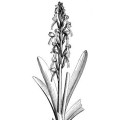 |  |
|
LEAVES: |
Character | Arrangement | Attachment | Venation |
Description | | | |
General
Picture | 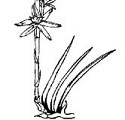 | 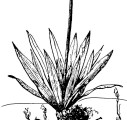 |  |
| |
Character | Leaf Shape | Leaf Margin | Remarks |
Description | | | |
General
Picture |  |  |  |
|
FLOWERS: |
Character | Colour | Basic Flower Type | No. of Petals | No. of Sepals |
Description | Pale Pink Colour ranges from off-white pink to pink or lavender, but mostly pale pink. | | 6 To be botanically precise, the flower has 3 sepals (outer whorl) and 3 petals (inner whorl) which are identical, and so they are collectively referred to as 6 tepals or perianth segments. | 0 |
General
Picture | | 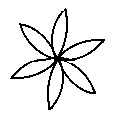 |  |  |
| |
Character | Inflorescence | Description | Ovary | Stamens |
Description | | The flower is made up of 6 pale-pink petals with a central longitudinal stripe which is slightly more colourful. These are arranged symmetrically in the form of a star. There are 6 erect stamens with firm thick filaments and conspicuous purple-black anthers and also a single pistil with a pink or lavender style and stigma. The superior ovary is usually white. | | |
General
Picture |  |  | 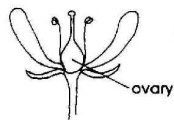 | 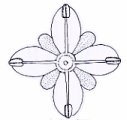 |
| |
Character | Scent | Average Flower Size | Pollen Colour | Other Notes |
Description | None | 6-7mm | Black | - |
|
SEEDS: |
Character | No. Per Fruit | Shape | Size | Colour |
Description | 6 | Tooth-shaped Roughly a conical or pyramidical shape. | 2mm | Black |
General
Picture |  |  |  |  |
|
FRUIT AND OTHER BOTANICAL DATA: |
Character | Fruit Type | Colour of Fruit | Subterranean Parts | Other Notes |
Description | | Green Turns beige when ripe and dry. | | - |
General
Picture | 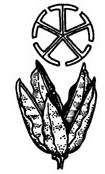 |  |  |  |
|
|
| Plant description and characters | |
Life Cycle: | Perennial. |
Growth Form: | GEOPHYTE (bearing underground bulbs, rhizomes, stolons, etc.) |
Habitat: | Garigue, steppe, cliff tops, gaps and pockets within exposed rocky ground. |
Frequency: | Very Common |
Localities in Malta: | Dingli Cliffs, Fawwara, Siggiewi, Mtahleb, Bahrija, Mistra etc. |
Plant Height: | 4-8cm. |
| Sep-Oct |
Protection in Malta: | Not legally protected till the last update of this website (2/Mar/2022) |
Red List 1989: | Not listed in the Red Data Book of the Maltese Islands |
Poison: | |
This miniature lily is seen in Malta only for few weeks during the beginning of Autumn but it is described perennial due to its all year round living subterranean bulb, which is about 15mm across and have a brown coating. The plant first develops the flowering stalk at the end of September and beginning of October (depending rainfall) and flowers for a small period of 2-3 weeks during October. Fruiting and seed formation takes place by the end of October, and then the leaves are formed later in Winter.
The flowering stalk produces racemes of 3-15 flowers. The flowers at the bottom open first and this progress up to the tip of the stalk. Buds are slightly elongated rounded structures with pale brown and white stripes. The stalked flowers consists of 6 petals which their colour vary from off-white pink to pale pink or pale lavender. Each petal have a central longitudinal stripe which is slightly more intensively coloured from the petal. The 6 petals are arranged in a star-shaped actinomorphic flower form.
The male reproductive organs are 6 conspicuous stamens with firm, erect filaments (white or lavender in colour) and black or very dark purple anthers. The female sex organ is a superior white ovary with a short single style and stigma. The stigma and upper part of style are often pink or lavender in colour. Flowers are very small, about 6-7mm across.
The fruit is a rather small capsule which when ripe it splits open into 3 lobes, each having a pair of seeds. The seeds are black, tooth shaped or pie-slice shape and measures about 2mm.
By mid November the stalk withers and the leaves starts growing. The plant forms 4 to 8 leaves, growing directly from the underground bulb. They are very narrow and can be described as linear shaped. They measure about 4-8cm long and 1-2 mm wide. They are also glabrous (nearly shining) have an entire margin and a grooved or channelled cross section.
|
|
| Information, uses and other details |
Nativity
Prospero autumnale is native from Great Britain East to Asia Minor and even extends into Africa. [WWW-77]
According to reference [WWW-26] this plant is native to North Africa, Middle-East and most of Europe:
- Northern Africa: Algeria; Morocco
- Western Asia: Iran; Iraq; Syria; Turkey
- Caucasus: Azerbaijan; Georgia; Russian Federation
- Europe: Albania; Bulgaria; Greece; Italy; Romania; Hungary; Yugoslavia; Ukraine, France; Portugal; Spain, United Kingdom
Limited use of plant
This plant has only ornamental use. There is no reports of any applied medicinal, culinary or well popular traditional use. [WWW-47].
Toxicity.
Like most Scilla species this plant is likely to be very poisonous. [WWW-79] In fact it is listed in the book "Poisonous plants of all countries" [323]. Apart this reference there is no more evidence about it's toxic constituents but it may be assumed that its toxicity and toxic compounds are similar to a well known poisonous Scilla, that is the Scilla maritima (Urginea maritima). [SM]
Hardiness and propagation
Prospero autumnale is hardy to at least -26 C. [WWW-77] and withstand temperatures of about 28 C during the end of September in Malta [SM]. Prospero autumnale is rarely available from bulb dealers. It is something of a pass-along plant, permanent in the garden with some natural propagation. It may be grown from seed or dormant bulbs lifted to find offsets. [WWW-77]
Medicinal properties:
[WWW-26] states that this plant have few medicinal properties as shown in the table below, but no reports have been found of applying this plant in medicine, probably because of its small size and toxic properties.
| Cardiotonic |
Exciting action in the heart, through the medium of the stomach; cordial; stimulant [WWW-32 ] |
| Diuretic |
Tending to increase the secretion and discharge of urine. [WWW-32] |
| Expectorant |
Used to induce the ejection of mucus, phlegm, and other fluids from the lungs and air passages by coughing or spitting. [WWW-32] |
| Stimulant |
Produces a temporary increase of vital activity in the organism, or in any of
its parts; [WWW-32] |
Scilla and Greek Mythology
Scilla was a beautiful nymph who fell in love with Glauco. To obtain his love she asked a witch called Circe to prepare a magical potion. She prepared the potion, and poured it into a lake where she advised scilla to bath there for casting the magical effect. It happened that Circe was also in love with Glauco and to get rid of Scilla she did not prepared a love potion but on the contrary it transformed Scilla in a horrorful monster with the body of a woman a tail of a fish (some describes it as 2 serpent tails) and 6 heads of barking dogs, With despair Scilla threw herself in the sea water at Sicily in front of cariddi. She hid herself in the deep caves and only went out to hunt for navigational vessels. Haribda - other terrible monster lived opposite from her. Only Argonauts and Odysseus's ship could pass between these two dangers. Translated from [WWW-47] by [SM]. The name Sicilia (sicily) may have originated from Scilla. [SM]
Personal Observations
Flowering season in Malta and its habitat
This plant flowers in Malta for a short period.
The flowering stem emerges at about mid-September and the flowers are formed more or less 2-3 weeks later, thus in October. The stems are very short (6cm) and the flowers are tiny (5mm) hence it can be difficult to locate from walking distance. They like to grow in damp, mossy reddish soil found in rock spaces and pockets in rocks of garigue and cliffs. By the end of October all flowers are gone and what remains is the fruit capsules splitting into 3 locules bearing 6 black seeds (a pair every splitted locule). The long linear leaves grow after the flowering-fruiting phase but they are usually unobserved by surrounding vegetation during Winter and Spring. [SM]
Diversity of the plant
There are various descriptions of the flower with regards to its colour, and in most cases it is described as lavender/lilac petals with a pale blue centre. The Maltese flower form is then more whitish. It has a pale lilac or pink colour (off white) with a white centre and a pink style. In all flowers, anthers are dark purple.
Below is a table of several images of the flowers of Prospero autumnale taken from different sources as indicated. As it can be seen, there is distinctive colour variation between different flower images:
| Image from France |
Purple, pale blue centre |
http://man.del.free.fr/corseflore.htm |
| Image from France 2 |
cornflower, pale blue centre |
http://www.iris-bulbeuses.org/saison/aout.htm |
| Image from Spain |
Lilac with pale blue stripes and pale blue centre |
http://www.hoseito.com/ |
| Image from Guernsey |
Lilac, pale blue centre |
http://www.guernsey.net/~cdavid/botany/ |
| Image from Italy |
David, pale blue centre |
http://www.flora.garganoverde.com/liliaceae/ scilla_autumnalis/scilla_autumnalis_scilla_autunnale_06.htm |
| Image by Iza Goroff |
Goof |
www.nargs.org/potm/potm_aug04.html |
| Image from UK |
aught, pale blue centre |
http://www.bioimages.org.uk/HTML/P1/P17819.HTM |
| Image from UK (2) |
White |
http://www.bioimages.org.uk/HTML/P2/P23087.HTM |
| Image from Spain (Catalunya) |
Lilac with white centre |
http://www.xtec.es/col-anunciata-cerdanyola/plantes/ flor%20scilla%20autumnalis.htm |
| Image from Malta |
Lilac/Pink with white centre |
www.maltawildplants.com |
|
|
| Links & Further literature
(0 papers) |

Google Web |

Google Images |

Google Scholar |

Research Gate |

Wikipedia |

JSTOR |

GBIF |

Med Checklist |

Cat. of Life |

EoL |

IPNI |

World Flora Online |

Plants of the World Online |

Vienna Virt. Herb. |

RBGE Herbarium |

KEW Herbarium |

MNHN |

Arkive |

IUCN |

CABI |
Kindly Email if there are papers and publications about local
studies or information about this species to be included in the list above.
|
| Photo Gallery (32 Images) |  |
 |
 |
 |
IMAGE: SCLAU-01 Photo of a mature flower (left) and one just bloomed. The latter still have entire (non-dehiscent) anthers which have a contrasting maroon colour. |
IMAGE: SCLAU-02 Photo of flower which consists of 6 small petals, 6 erect stamens with dark brown-black or violet-black anthers, and a small pinkish style. Covering the ovary there is a white shell made up of 6 flaps coming from the base of the anthers' filaments. |
IMAGE: SCLAU-03 Photo of one flowering stem growing directly from the bulb. Leaves are not present during the flowering phase. |
IMAGE: SCLAU-04 Photo of the small flower in situ. It is only about 5-6cm above ground so it is very difficult to notice while walking. Fortunately at September/October there is not much vegetation covering it. |
 |
 |
 |
 |
IMAGE: SCLAU-05 Close up photo of the flower in the shade. |
IMAGE: SCLAU-06 Close up photo of the flower. 6 tepals, 6 stamens, central white ovary bulging from three side and a central, pale violet style with a non conspicuous stigma. |
IMAGE: SCLAU-07 Close up photo of the flower. Interesting colour of the filaments holding purple-brown anthers. |
IMAGE: SCLAU-08 Photo of buds and back side of flower. At the back of each tepal there is brown stripe which is more prominent than from the front side. |
 |
 |
 |
 |
IMAGE: SCLAU-09 Photo of the white flower with prominent dark anthers held by erect white filaments that have a violet tip. Also included in the photo are the sub-spherical fruit capsules (slightly out of focus). |
IMAGE: SCLAU-10 Close up macro photo of flower ( about 6mm across) showing in detail its petals, stamens and spherical pistil. |
IMAGE: SCLAU-11 Photo of a specimen which have a lavender flower, a much more vivid colour from the normal pink form. |
IMAGE: SCLAU-12 Photo of an albino specimen. Confirmed to be an albino (not a white flower form) from the fact that the anthers are yellow instead maroon and the bud stripes are green. |
 |
 |
 |
 |
IMAGE: SCLAU-13 Photo of 3 blossomed flowers of the same plant. The number of flowers varies from plant to plant between 3 to 12. |
IMAGE: SCLAU-14 Photo of flower (side view) and few buds. Usually in any flowering stalk, there is only one flower open and when it expires, the next bud above will flower. |
IMAGE: SCLAU-15 Photo of plant during mid October. It is a low growing plant (about 5cm) without leaves but just one flowering stalk holding not more from 12 flowers. One has literally bow down to the soil to note this small low growing plant. |
IMAGE: SCLAU-16 Photo of plant during mid November. The flowers have developed into fruit which when ripe split open into 3 parts to disperse seeds (seen in this photo as straw colored stalks). After the fruiting period, the leaves develop and grow from the underground bulbs. The leaves are linear and about 4cm - 8cm in length. |
 |
 |
 |
 |
IMAGE: SCLAU-17 Scanned image of flower under black and white backgrounds. Note the violet tips of the filaments. |
IMAGE: SCLAU-18 Scanned image of flowering part of plant and its dimensions. |
IMAGE: SCLAU-19 Scanned image of flower (sideview). Note the light brown stripe at the centre of the petal. |
IMAGE: SCLAU-20 Scanned image of fruit capsules. Each can hold a maximum of 6 seeds. |
 |
 |
 |
 |
IMAGE: SCLAU-21 Photo of the fruit. |
IMAGE: SCLAU-22 Close up photo of fruit which are small dark purple capsules. |
IMAGE: SCLAU-23 Photo of splitting fruit capsules. This photo was taken on the 28th Sep 2005. |
IMAGE: SCLAU-24 Photo of fruit in situ. They are dehiscent, more or less spherical capsules which when ripe splits open into 3 lobes. Each lobe holds 2 black seeds. |
 |
 |
 |
 |
IMAGE: SCLAU-25 Photo of the ripe fruit split open and exposing its black seeds. No developed means of seed dispersion. Fruit are ripe during October. |
IMAGE: SCLAU-26 Scanned image of ripe fruit. Each capsule splits into 3 parts each holding 2 black seeds, thus each capsule holds a maximum of 6 seeds. |
IMAGE: SCLAU-27 Magnified scanned image of seeds. They are tooth shaped and about 2mm in size. |
IMAGE: SCLAU-28 Magnified image of black seeds under light microscope showing the detail of the seed testa (seed covering). |
 |
 |
 |
 |
IMAGE: SCLAU-29 Magnified image of seed-coat texture under light microscope. |
IMAGE: SCLAU-30 Illustration of the plant taken from http://www.nal.usda.com. Usually the plant have an inflorescence with less flowers. |
IMAGE: SCLAU-31 Photo of bulb which has a brown, smooth tunic and forms several thick, white roots. |
IMAGE: SCLAU-32 Photo of entire plant with annotations of its main parts. |
|
| | |

